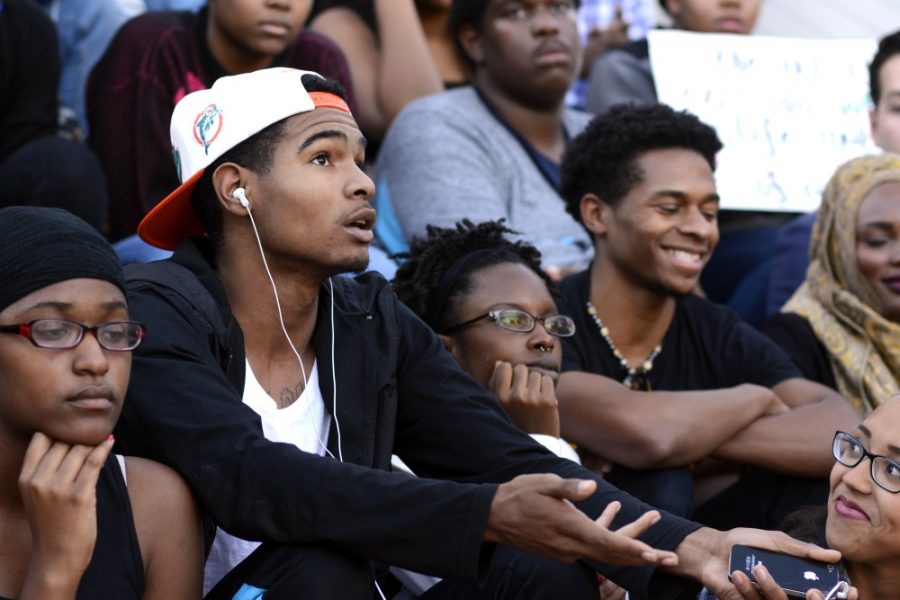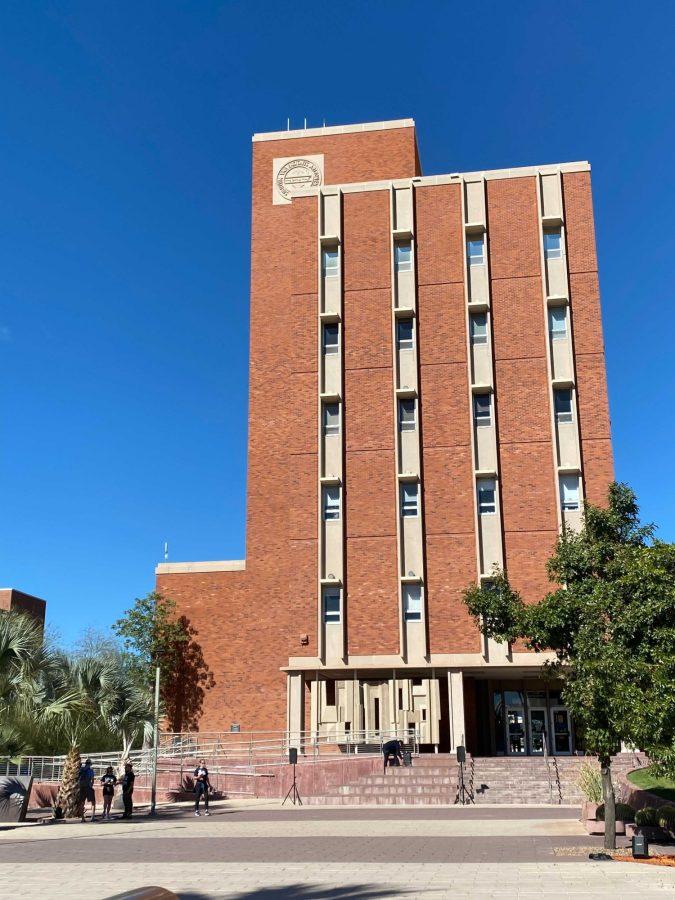Students from the UA Black Student Union held a protest and discussion on the steps of Old Main late Friday.
The students marched from the Student Union Memorial Center to Old Main, where they discussed various issues encountered by minority students attending the UA. The protest stems from the recent controversy and uproar over University of Missouri administrative response to campus racism toward minority students.
At the protest, UA President Ann Weaver Hart walked with the students from the SUMC to Old Main and answered BSU’s questions about her administration.
Jay Patrick, an undeclared freshman, addressed Hart about the representation that black students receive at the university in regards to different resources.
“As you can see, a lot of the resources here are geared to benefit, no offense, white students, or people that just come from money,” Patrick said.
Along with Hart, other administration entities also came to speak with the BSU outside of Old Main. Dean of Students Kendal Washington White stood with Hart, and ASUA Student President Manuel Felix walked and sat with the students during their protest.
Hart agreed with BSU students, and made it known that she thinks there needs to be a change in the UA for students of minority communities.
“We need to find a way to get you there and involved,” Hart said. “Hearing and being part of that process is important; there are so many things that we need to keep working on. This is not a one-and-done. Every single year people join this community. Issues are always present and we need to keep addressing them. We will need to do things university-wide.”
Felix took a seat with the students on the steps of Old Main to show his support of the black community. He said that it is important for minority UA students to hold those in power at the university accountable, and he plans on working as liaison between the BSU and ASUA.
“I joined in because I think that it’s a time that we join in, I don’t think that it’s the time to sit in the back and hear what they have to say. I really think that it is time to join in and actually do something about it,” Felix said. “Everyone has to come together as a community, we have to hold each other accountable. … The main goal is that students that come to this university feel safe and feel welcome. These students are making history through actions like these that are truly making an impact on this campus.”
After some discussion, BSU co-president Kevyn Butler read a statement in support for the students at Missouri before returning to the BSU office at the Dr. Martin Luther King Building.
“As the structures of the University of Missouri have failed you in the responsibilities to uphold an institution that protects your emotional and spiritual being, we have no reason to believe that your institution has the just, systematic structure to assist in protecting your bodies as well. We will do so in consistently demonstrating on our campus and making this video in solidarity,” Butler said in the video statement.
After the statement, the students of the BSU marched back to the MLK building while chanting words of black empowerment.
Upon arriving at the MLK building, co-president Trinity Goss, a philosophy junior, explained the reason for the protest and the reason for change.
“Often times people think that racism is an overt act of hatred towards another race, but often it is in the form of microaggression or administration, or not feeling safe outside of a cultural center,” Goss said. “The real question is: ‘Does this occur?’ And it does. That should be enough to spark an interest in the administration and motivate them to review their structural ways of handling students at large, and students of color. The fact is that it is a problem because it does occur, and one time is too many.”
Follow Lauren Renteria on Twitter









